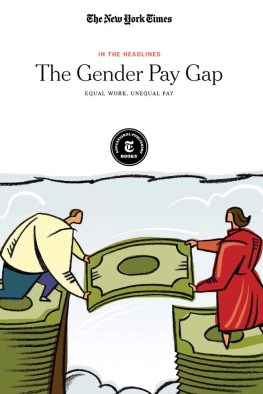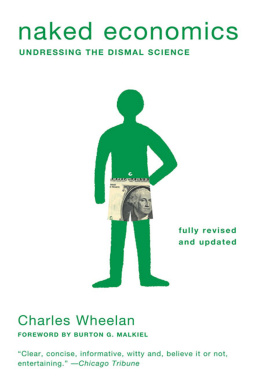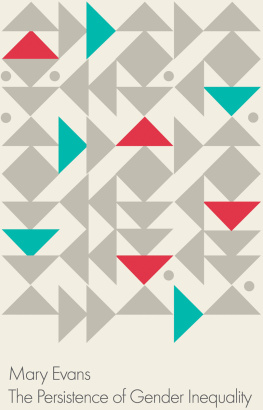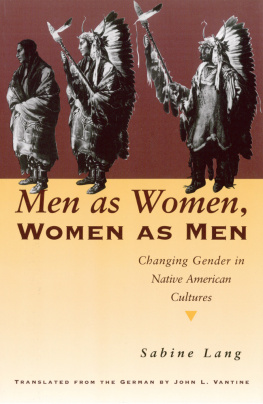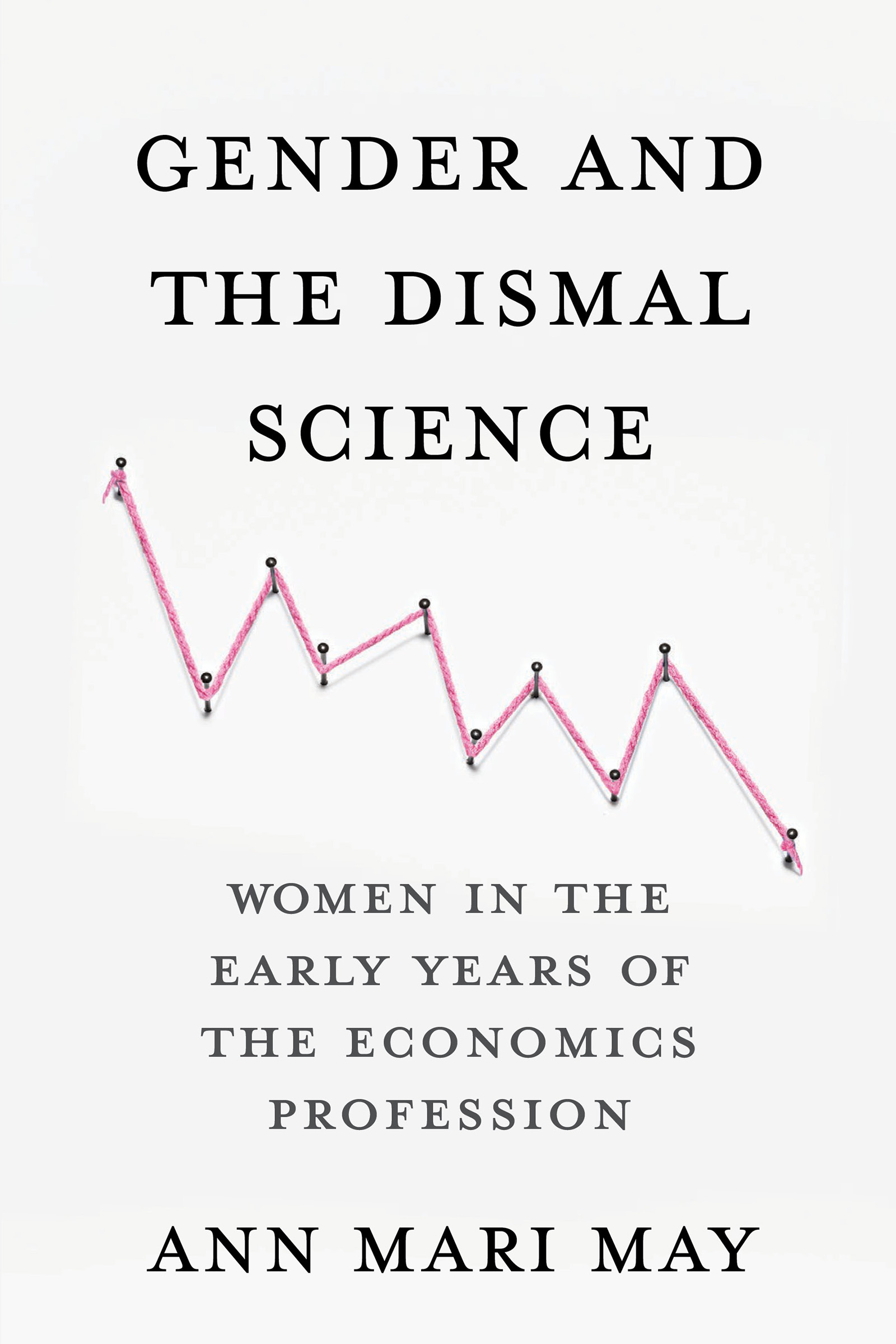Contents
Guide
Pagebreaks of the print version
GENDER AND THE DISMAL SCIENCE
GENDER AND THE DISMAL SCIENCE
WOMEN
in the
EARLY YEARS
of the
ECONOMICS PROFESSION
ANN MARI MAY
Columbia University Press
New York

Columbia University Press
Publishers Since 1893
New YorkChichester, West Sussex
cup.columbia.edu
Copyright 2022 Ann Mari May
All rights reserved
E-ISBN 978-0-231-55004-8
Library of Congress Cataloging-in-Publication Data
Names: May, Ann Mari, 1956 author.
Title: Gender and the dismal science : women in the early years of the economics profession / Ann Mari May.
Description: New York : Columbia University Press, [2022] | Includes bibliographical references and index.
Identifiers: LCCN 2021058020 (print) | LCCN 2021058021 (ebook) | ISBN 9780231192903 (hardback) | ISBN 9780231192910 (trade paperback)
Subjects: LCSH: Feminist economicsUnited States. | WomenEconomic conditions. | WomenEmploymentUnited States. | EqualityUnited States.
Classification: LCC HQ1381 .M38 2022 (print) | LCC HQ1381 (ebook) | DDC 330.0820973dc23/eng/20220103
LC record available at https://lccn.loc.gov/2021058020
LC ebook record available at https://lccn.loc.gov/2021058021
A Columbia University Press E-book.
CUP would be pleased to hear about your reading experience with this e-book at .
Cover design: Noah Arlow
Cover image: Getty Images
FOR MY SON, MICHAEL MAY

CONTENTS
T he genesis of this book began in the archives of the American Economic Association (AEA). I was visiting the archives in search of information on the organizational structure of the association in the early years when I came across a folder referring to trouble. Somehow, I knew this would involve a woman, and sure enoughit did.
The file contained communication between the first editor of the American Economic Review (AER), a female author whose book was reviewed in the inaugural issue, and a male reviewer. Following the threads of these exchanges revealed much about gender and the profession in the early years of the field and about the challenges facing women economists.
As I began to research the topic of women in the early years of the economics profession, it became clear to me that much of the work on the history of women and economics had been primarily biographical rather than empirical. The fact that there were so few women economists, along with the fact that many scholars in this male-dominated profession had little knowledge of or interest in the history of women in the field, limited what we knew about women and about the role of gender in the profession in the early years. Using the AEA archives along with published material in the AER and the Quarterly Journal ofEconomics (QJE), I was drawn to the task of adding an empirical layer to our knowledge about women and the profession and blending what we can garner from data with biographical and historical accounts.
The chapters in this book use novel data sets to offer new information on the proportion of women members in the AEA, their backgrounds, and their limited role in the associations work in its first sixty-three years of existence. At the same time, they provide information on the old boy network in publishingin monographs and in scholarly journals such as the AER and the QJE. The analysis reveals much about important elements of what we might refer to as networking among economists and the determinants of success in the increasingly pivotal realm of publishing. When examining the likelihood of publishing more than one article in these journals, we can understand how important it would be for authors and editors to share the same institution in their doctoral training. How important would it be that authors and editors share current institutional affiliation? Most interesting, how important would it be for authors who had earned their doctoral degrees from institutions where editors were currently located, and did this bode well or work to the detriment of hopeful authors?
Another overlooked aspect of the history of women in economics concerns differentiating between the institutional barriers facing Black women and white women. Because Black women faced significant barriers to entry as students in higher education, which then resulted in a lack of sufficient numbers for separate empirical analysis, it became important to explicitly examine these institutional barriers and Black womens role in higher education and the labor market. In particular, I examine Black womens lack of access to the Seven Sisters institutions that were so important in carving out a space for white women in economics, as well as their options for education in public institutions.
This research, particularly the archival sources used and the data assembled, would not have been possible without the support of many individuals. I begin by expressing my gratitude to my editor at Columbia University Press, Christian P. Winting. His understanding of the unique nature of this project, expert advice, and encouragement made the process all the more rewarding. I also thank all the members of the Columbia University Press team who generously offered their expertise along the way, including Kathryn Jorge, and Laura Poole for her careful copyediting.
I also acknowledge the kind assistance of the librarians and archivists who generously offered their time and expertise. Most helpful were the staff of the Rare Book and Manuscript Library at Duke University, where the AEA archives are now located. Over many years, Brooke Guthrie has generously provided her time, and I greatly appreciate her kind assistance. Rachel Provost Layher (Duke University 2011) and Juan Carvajalino (postdoc Fellow of the Center for the History of Political Economics at Duke University), provided valuable research assistance in the early stages of this project.
Many other librarians and archivists offered their valuable assistance, including Sarah Hutcheon, research librarian at the Schlesinger Library at Radcliffe College, and Brenden McDermott of the Boston University Library, both of whom provided information on women doctoral graduates, despite the challenges that COVID-19 presented to access. At the University of NebraskaLincoln, Signe Bourdreau and Suping Lu offered helpful suggestions and assistance obtaining needed sources along with Josh Caster of the UNL Archives.
Many of the students who took my courses on gender and social provisioning provided research assistance in collecting information on books and articles published by women economists, their doctoral degrees, and the home institutions of economists publishing in the early years. They provided countless hours of tedious but important work, and I am grateful to many undergraduate students. In particular, I relied most on Naomi Atughonu, Clinton Bartek, Allison Black, Taylor Bolam, Darren Brinkerhoff, Jay Byrd, Gabriel Fox, Connor McCoy, Emily Murphy, Giselle Nevarez, Manav Nirmalraj, Emily Noesen, Jennifer Pitsch, Sarah Rakes, Madeline Vavricek, and Rebecca Volten as well as graduate students Kari Eller, Zoe Mays, Joe Sandow, and Andrew Sorensen. Without their assistance populating spreadsheets, the analysis on publishing in the early years would not have been possible. Likewise, I thank my colleague Eric Thompson and the Bureau of Business Research for providing needed research assistance through their Scholars Program.


